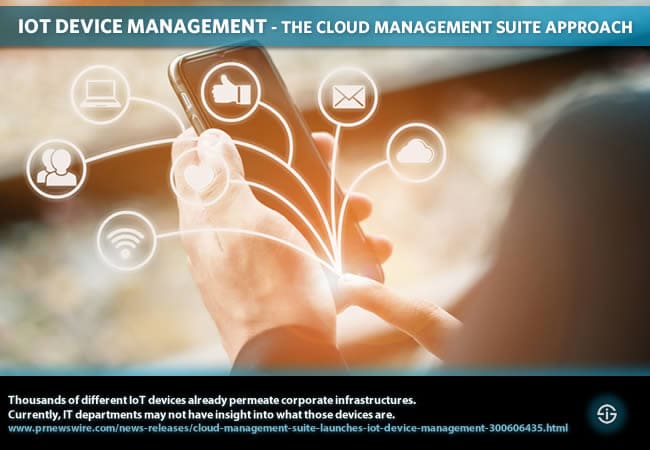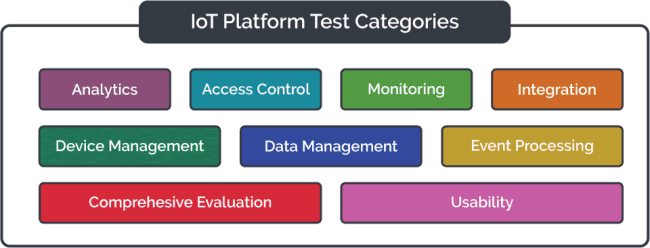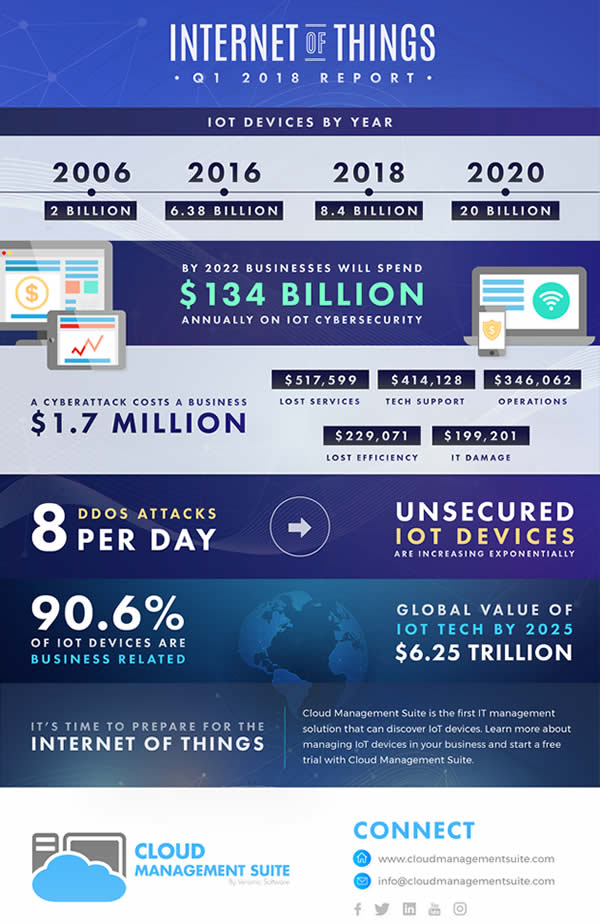US-based Verismic Software has added IoT device management features to its cloud-based IT management solution, Cloud Management Suite.
With IoT device management not just being an important challenge in realizing IoT projects but also being a key component of all IoT platforms, the number of companies providing it keeps increasing as do alternative ways of tackling (aspects of) the challenges.
The addition of an IoT device management feature in the Verismic Cloud Management Suite is part of a rapidly evolving IoT device management landscape whereby ample players want a piece of the IoT device management pie as IoT devices keep being added. The various IoT device management providers often come with very different approaches, ecosystems and go-to-market strategies and there is a clear move towards the edge.
The Verismic Cloud Management Suite approach is not comparable with that of Industrial IoT platforms or ‘real IoT platforms’ that enable IoT application development. It clearly focuses on security, IT management and device discovery/management in the scope of, among others enterprise IT networks.

Multiple players and strategies in IoT device management
For all the obvious reasons IoT device management is hot. In 2017 we, among others saw the launch of Intel’s zero-touch IoT device onboarding SDO solution.
It is integrated with Intel’s device lifecycle management platform, Wind River Helix Device Cloud, to tackle the challenge of provisioning and managing devices. Intel offered Intel SDO to IoT platform providers witch Google Cloud, Amazon Web Services, Microsoft Azure intending to leverage it (we don’t know who does as we write this) as it focuses on a specific part of IoT device management: onboarding.
End 2017, after the Intel SDO announcement, Amazon launched a range of new IoT services at its AWS re:Invent, including AWS IoT Device Management, enabling the secure onboarding, organization, monitoring and remote managing of IoT devices at scale in the cloud.
With the February 2018 acquisition of IoT platform Xively from LogMeIn Google has bought itself the Connected Product Management it wanted and in March 2018 Google tried to further close its IoT gap with the likes of Amazon, IBM and Microsoft by partnering with Foghorn for its Google IoT Core (although that partnership is about far more than device management, yet the edge computing, machine learning and data analytics focus de facto means the connection and management of Industrial IoT devices at the edge). The list of initiatives but also of new players goes on.
IoT device management: an essential part of IoT platforms
MachNation, which offers IoT platform capability comparisons, based on tests with its MachNation IoT Test Environment (MIT-E), among others mentions Greenwave Systems, Telit and Intel’s mentioned Wind River as IoT device management players.
The company emphasizes that often organizations overlook the importance of a strong IoT device management platform which is really foundational for IoT projects and stresses that IoT device management and IoT data management are both needed to support the end-to-end design, testing, launch and operation of an IoT solution.
Other IoT device management platform providers include those from big names such as, on top of the already mentioned ones, Oracle, Bosch Software Innovations, PTC, Advantech and Aeris. Also relayr, which recently announced a US$30m investment offers device management on top and with its solutions such as its Industry 4.0 protocol-agnostic Industrial IoT middleware. Relayr’s approach is also edge-oriented with fog computing (and the OpenFog Consortium work).
And of course they are not the only ones. As said and as clearly shown in the MachNation IoT platform test categories image below, device management simply is key in an IoT platform.

Verismic Cloud Management Suite IoT device management: all about the network
Back to the Verismic Cloud Management Suite announcement. So, Verismic has a different stance than most of the mentioned providers and certainly isn’t focusing on Industrial IoT and Industry 4.0 nor on IoT projects at scale.
In the communication and positioning of the IoT device management feature within its Cloud Management Suite Verismic focuses more on the dangers of IoT devices that might be already connected to the corporate network without anyone really knowing and on IoT device discovery, management and security in the scope of overall IT management and the enterprise network, which is obviously due to the origins and purpose of the Verismic Cloud Management Suite.
In other words and, as the announcement clearly indicates, we are more in an enterprise IT environment where IoT is not so much leveraged for large projects but rather as an evolution you need to be ready for (by offering examples such as connected coffeemakers and just looking at the video below that much becomes clear).
While this will appeal to IT managers of companies with little IoT plans and more concerned about managing those IoT devices and to a IT managers who are more interested in securing the corporate environment and network (which is a relevant goal of course) before possible leveraging IoT at scale it’s not what we expect to see in, for example, real smart office environments, smart buildings, the factories in smart manufacturing and related IoT use cases in Industry 4.0 and Industrial IoT where the specialized IoT platforms and their ecosystems of course handle IoT device management, including security, in larger IoT projects.
Inside the Verismic Cloud Management Suite IoT device management feature
There is a market for the Verismic Cloud Management Suite IoT device management feature which, according to the press release, is a centralized solution to track and manage IoT devices.
It proactively and dynamically indicates which IoT devices have been added to a network (again the focus on IT management and the network) and thereby shows them in the Verismic Cloud Management Suite console. As CEO Ashley Leonard puts it the feature focuses on solving the problem of visibility into the major vulnerabilities IoT devices present.
And, again, there certainly is a valid reason to do so. As Verismic Software puts it in the press release:”Thousands of different IoT devices already permeate corporate infrastructures. Currently, IT departments may not have insight into what those devices are.”
The Verismic Cloud Management Suite IoT device management feature, with its focus on security, enables device discovery, remote control, patch management, power management and more in the SaaS environment of Verismic’s Cloud Management Suite as is explained in the datasheet which you can check here and shows all possibilities, also on the level of IoT security of course.
From a device perspective the Verismic Cloud Management Suite IoT device management overview among others mentions printers, wireless devices, smart home devices and media servers, further showing the niches Verismic is focusing on: offices, (smaller) organizations and even the home environment.
At the occasion of the launch the company created an infographic which also focuses on security, cyber-attacks and IT management (it is essentially a summary of somewhat older data from various research companies and vendors) as you can see below.

Top image: Shutterstock – Copyright: mansong suttakarn – All other images are the property of their respective mentioned owners.

